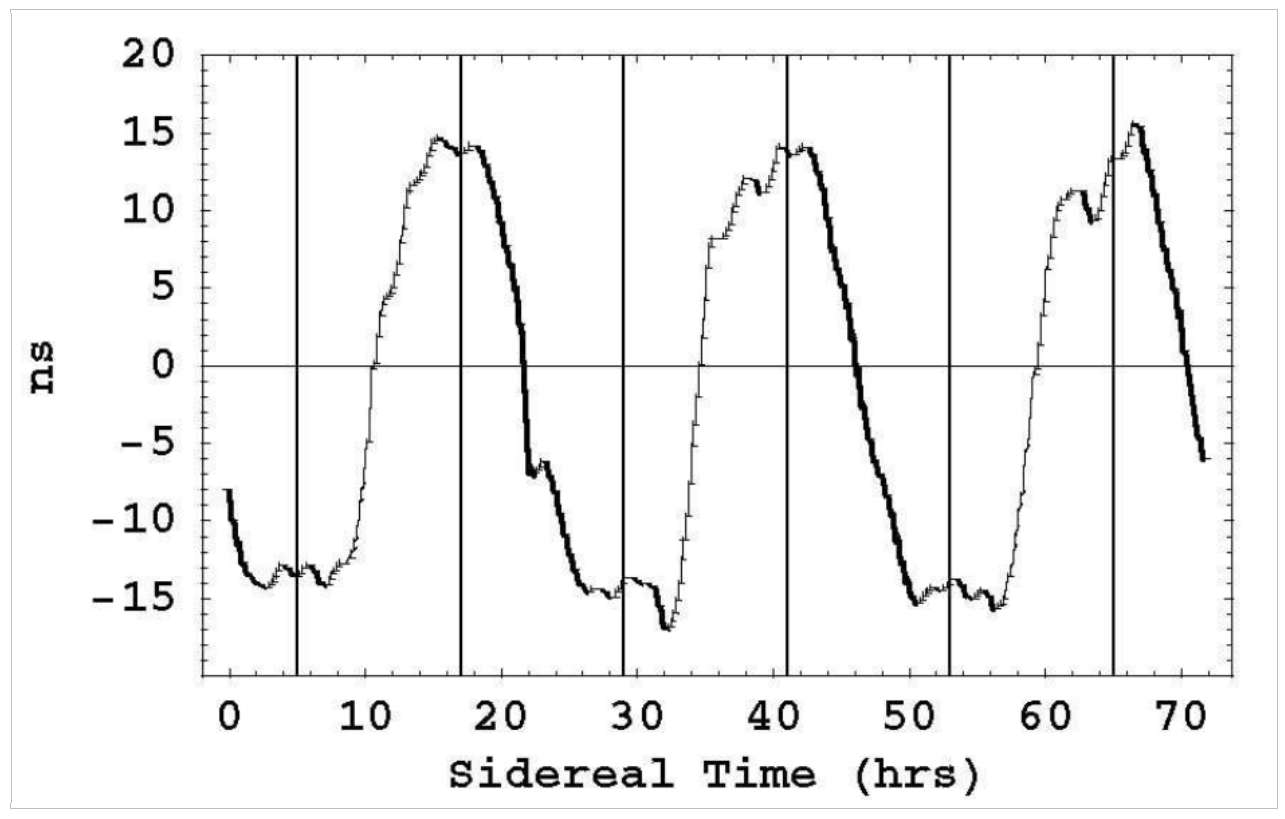Roland de Witte Experiment and Aurora Effect
In 1991, Roland De Witte was involved in some experiments with atomic clocks. The aim of those experiments was to find a correct way of clock synchronization.
The task looks easy at first glance. The right way is to synchronize with a signal easily. Other clocks have been synchronized by a given signal. For example, mechanical clocks can be synchronized by a canon shooting. A canon shoots a (shoot) at an indication of an escapement clock.
A remotely located observer sets a given indication on a clock. That indication is equal to the first clock next to the canon. The observer starts his clock as soon as he hears the cannon shooting. That way of clock synchronization was used for many centuries without any problem.
Sound waves became inappropriate for the task after other clocks were invented.
Clocks of a new generation use high-frequency oscillators “to show the correct time.” In that case, clocks located one kilometer from each other show about three seconds difference in indications after synchronization by sound waves.
That problem was solved soon, and sound waves were quickly replaced with electromagnetic waves. Everything looked fine for a while until a new generation of clocks was invented. Those were atomic clocks that use extremely high-frequency oscillations coming from rubidium—or cesium-based oscillating devices (oscillators).
Humankind has again encountered the same old problem. The duration of wave propagation, even for a short distance, becomes greater than the duration of one oscillation of the clock oscillator. Therefore, the indication of two remotely located clocks becomes uncertain after any synchronization.
Belga Telecoms company asked Roland De Witte to find the proper clock synchronization method for such clocks. That method was desperately needed to eliminate the problem of remote atomic clock synchronization.
Roland had two atomic clocks separated by distance in his lab. He conducted experiments, trying various ways of clock synchronization, but he saw the same problem every time. Clocks show some error after synchronization for a short time. Moreover, there is something strange with that error. Clocks show some slow deviation of that error after synchronization.
The direction, the seed, and the value of that error puzzled Roland for some time. He was unable to understand the cause and reason for such deviation of clock indications after any possible way of synchronization. After many experiments, De Witte stopped synchronization and watched that “instrumental error closely.”
To his surprise, the value of error changes to some extent reaches the maximal deviation, and comes back again to the zero value of “the instrumental error.” Roland was puzzled by such a result. It is evident to him that highly precision atomic clocks cannot show such strange behavior.
After some time of thinning and many more experiments, he decided to watch that effect for a long time without another circle of clock synchronization. That experiment led to a result that was already supposed.
“The instrumental error” shows a full circle of changes during one sidereal revolution of the planet. After that, the circle of changes starts all over again. De Witte supposed that the result comes from the signal showing a different propagation duration between clocks in various directions. In other words, the situation can be explained only by planet-to-medium relative motion. Moreover, that medium shows its independent existence of the observer-bound reference frame, or it does exist by itself.

Fig. 1.Roland De Witte experiment and Aurora Effect detected by Sidereal Time (Ref. 1)
The higher the distance between points of measurement (and the frequency of oscillations), the greater the value of the observable phenomenon.
In all cases of measurement, the Aurora Effect depends on the following:
The magnitude of Absolute Velocity (AV)
The distance between points of measurement
The frequency of oscillations used to take measurement
The orientations of the device regarding the direction of absolute velocity
- Allan Zade
Roland De Witte's experiment is the first known and best example of the Aurora Effect observed in a lab. Modern clocks with optical oscillators, which are accessible today, give an even higher magnitude of the experiment and its precision.

References
1. Reginald Cahill (2006) The Roland De Witte 1991 Experiment. Progress in Physics ,Volume 3
